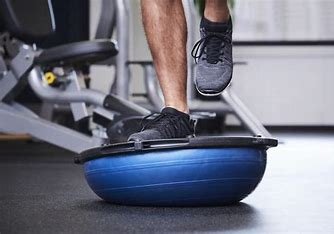
🧠 Proprioception: The Hidden Sense Behind Athletic Excellence
Introduction
When we think about athletic performance, we often focus on strength, speed, agility, and endurance. But there’s a lesser-known, yet crucial component that underpins all of these abilities—proprioception. Sometimes referred to as the “sixth sense,” proprioception is the body’s internal awareness of its position, movement, and force of muscle activity. It allows you to move gracefully, react quickly, and stay balanced—even with your eyes closed.
For athletes, developing proprioception isn’t just beneficial—it’s essential. Whether you’re sprinting down a field, landing a jump, or pivoting in mid-air, proprioception is what allows you to move with precision, efficiency, and control.
What Is Proprioception?
Proprioception is the body’s ability to detect its position in space and movement without relying on visual cues. It’s made possible through a network of sensory receptors in the muscles, tendons, ligaments, and joints, which constantly send feedback to the brain about:
- Joint angles
- Muscle tension
- Movement speed
- Body orientation
This sensory input is integrated by the central nervous system, allowing you to subconsciously make micro-adjustments that maintain balance, posture, and coordinated movement.
How Does Proprioception Work in Athletes?
In sports, where movements are dynamic and often unpredictable, proprioception enables athletes to:
- React quickly to sudden changes, like an opponent’s move or an uneven surface
- Maintain joint stability, especially in high-impact movements like cutting or jumping
- Control body mechanics during complex skills like spins, flips, or tackles
- Prevent injury by avoiding awkward or excessive joint angles
For example, a soccer player doesn’t need to look at their feet to know where the ball is—they rely on proprioception. Similarly, a gymnast performing a backflip in the air can control their landing thanks to a strong sense of where their body is mid-movement.
Benefits of Enhanced Proprioception in Sports
✅ Improved Coordination
Proprioception helps different muscle groups work together smoothly, which is crucial for executing complex, fluid movements in sports like basketball, gymnastics, or dance.
✅ Better Balance
Athletes can maintain equilibrium even in challenging or unstable positions, such as a surfer staying upright on a wave or a skier navigating uneven terrain.
✅ Faster Reaction Time
When the body can detect changes in movement or position quickly, it can respond faster—essential in sports that require rapid decision-making.
✅ Injury Prevention
Good proprioception improves joint stability and muscle reflexes, reducing the likelihood of sprains, falls, and overuse injuries.
✅ Faster Recovery from Injury
Proprioceptive training is commonly used in rehab (e.g., after ACL or ankle injuries) to restore stability and coordination before returning to play.
Common Proprioception Training Exercises for Athletes
- Balance Training
- Single-leg stands, wobble boards, BOSU balls, or stability ball exercises
- Improves joint stability and balance
- Closed-Eye Drills
- Performing simple movements (e.g., squats or balancing) with eyes closed enhances internal awareness.
- Agility and Reaction Drills
- Ladder drills, cone drills, and fast footwork help integrate proprioceptive feedback with rapid movement.
- Resistance Band Work
- Adds variable resistance and instability, improving joint control.
- Dynamic Stability Exercises
- Jumping and landing mechanics, change of direction drills, and plyometrics train the body to adjust to unpredictable forces.
Real-World Examples
- Stephen Curry (NBA): His ability to shoot with extreme precision while in motion and under pressure is partially due to advanced proprioceptive skills—he trains balance and coordination religiously.
- Simone Biles (Olympics Gymnast): Her spatial awareness during flips and spins is an elite display of proprioceptive control in high-stakes environments.
- MMA Fighters: Grappling and striking require acute body awareness, especially in unfamiliar or compromised positions.
Conclusion
Proprioception is the silent powerhouse behind elite athletic performance. It’s what allows athletes to move with confidence, speed, and precision—without overthinking every action. By training this hidden sense, athletes gain a competitive edge: fewer injuries, faster reactions, better coordination, and smoother movement execution.
While strength and speed might get the spotlight, it’s proprioception that keeps athletes in control when it matters most. Whether you’re recovering from injury, looking to improve balance, or striving to sharpen your performance, proprioceptive training is an investment in long-term success.
